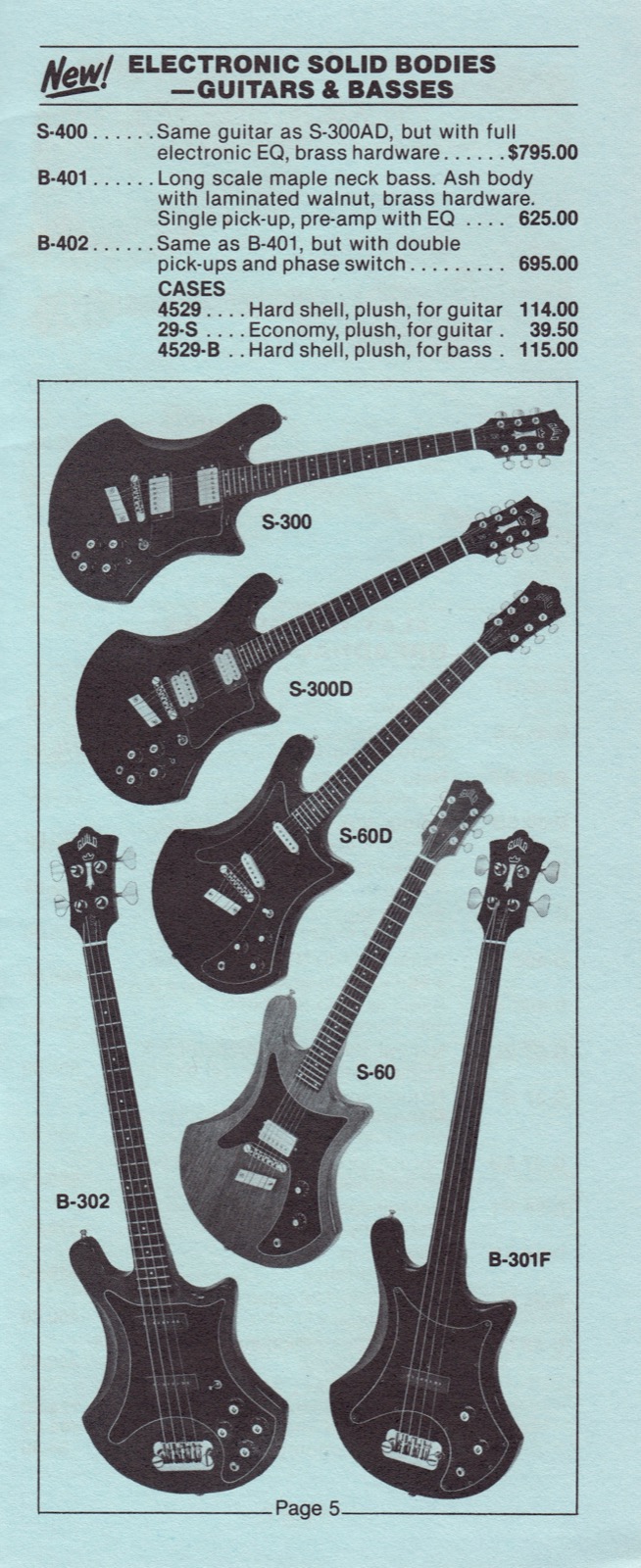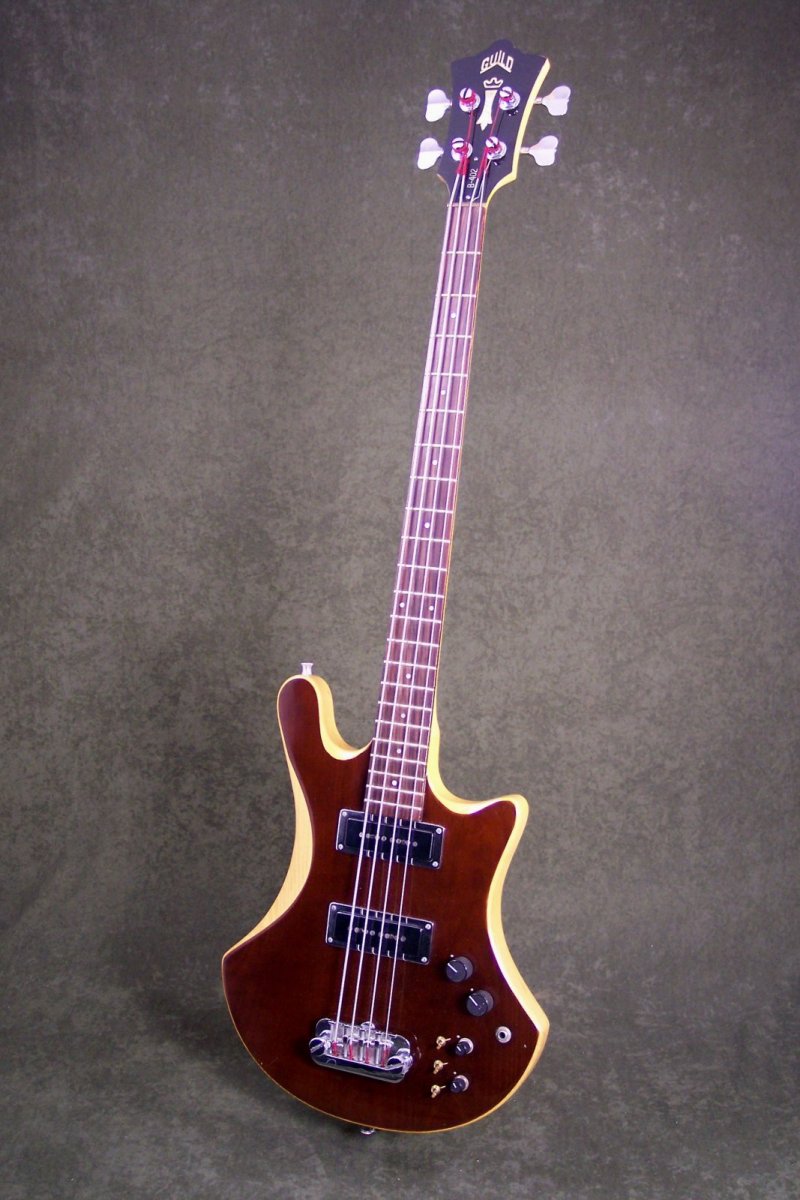The Guilds of Grot
Enlightened Member
Hey, Grot, do you recall what Guild called the finish coloring on the one on the right? I don't think I've seen another Guild like it.
Well, I've never seen anything in a Catalog, but I did find this:

For the B-401 Bass it says "Ash body with laminated walnut." Well I can tell you it's not laminated walnut (as in a layer of wood), it's just a dark layer of stain/finish! Maybe after Marketing listed the laminated walnut the Factory said, "That's way too much work, let's just slap some "walnut" stain on it!
I'm sure the answer to this with be forthcoming in Volume II. (Along with was there ever an S-400 guitar produced????)
Here's a better look:

(And no, off the top of my head I have no idea as to what all the switched do!)